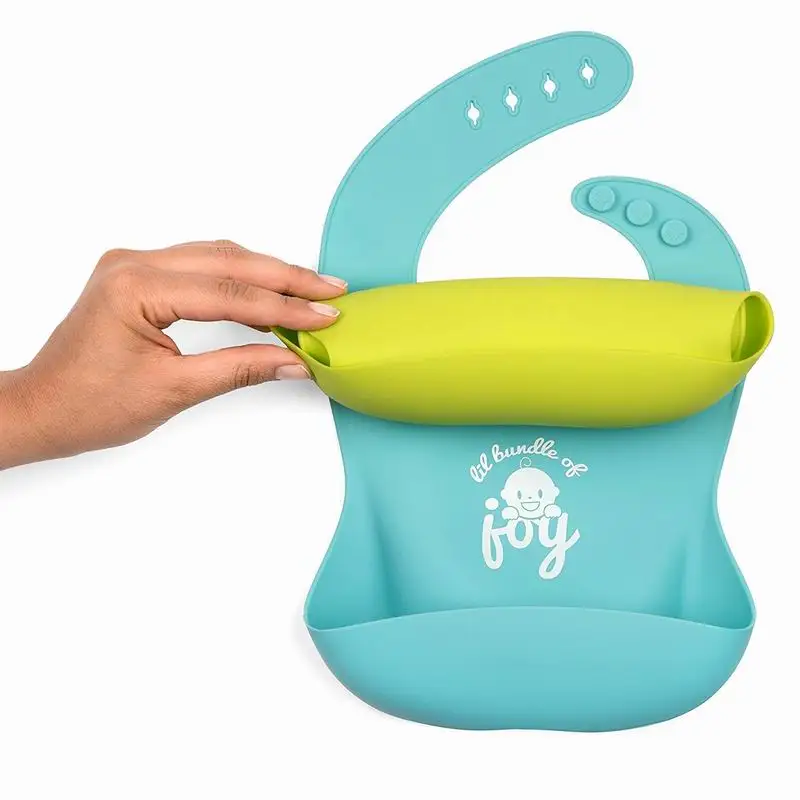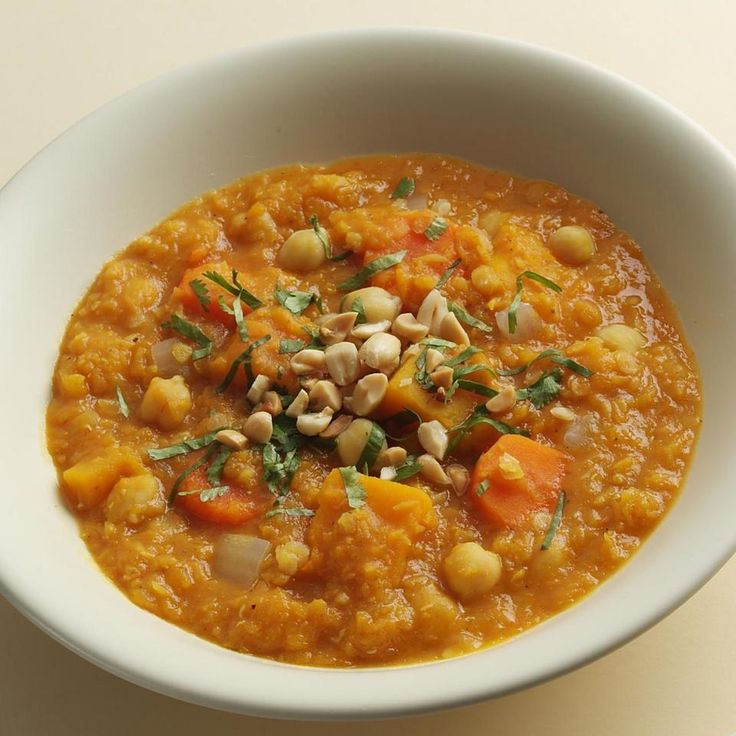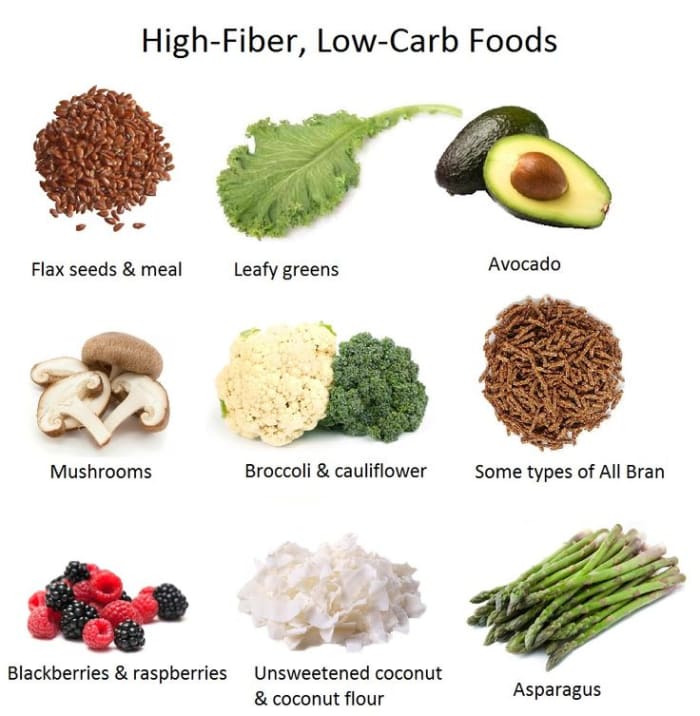Cereal baby feeder
Why You Shouldn't Add Cereal to Baby's Bottle
Image: Shutterstock
We know that many parents, tired and at their wits end from lack of sleep, are offered the advice of putting cereal in baby’s bottle so that baby might sleep for a longer period of time.
We know that many are probably tempted to try the old “cereal in the bottle” trick to gain an extra 1 hour (heck even an extra 20 minutes.) of sleep. We also know that this is one of the biggest and possibly one of the more dangerous practices you could engage in.
It is not a good idea because you may throw the “I’m full” instinct off kilter; more importantly, babies have been known to aspirate cereal when cereal is mixed in a bottle with formula or breast milk. Babies who are younger than 4-6 months old seldom know how to properly swallow anything other than breast milk or formula and gulping or “inhaling” a bottle with cereal in it may have deadly consequences.
Why does it seem that adding cereal to a bottle makes a baby sleep longer?
As my pediatrician explained, about the time parents begin to try the cereal in the bottle trick is just about the time that an infant may be sleeping for longer periods at a time. This new. longer sleeping pattern is a natural progression as baby ages and it oftentimes coincides with the addition of cereal to the bottle. This coincidence perpetuates the dangerous myth that cereal in a bottle does indeed help an infant sleep through the night.
To further this explanation, let us recall that between 6-8 months old, baby is often back to waking at night for a feeding. By this time baby should be eating solids and it appears that those solids are no longer helping baby sleep through the night. In reality, baby is hitting another growth spurt and may wake again during the night for more feedings regardless of eating solids.
Please read through the medical advice and studies regarding adding cereal to baby’s bottle:
Infant sleep and bedtime cereal – Macknin ML, Medendorp SV, Maier MC.![]() Department of Pediatrics, Cleveland Clinic Foundation, OH 44195-5045.
Department of Pediatrics, Cleveland Clinic Foundation, OH 44195-5045.
We studied whether feeding infants rice cereal before bedtime promotes their sleeping through the night. One hundred six infants were randomly assigned to begin bedtime cereal feeding (1 tablespoon per ounce in a bottle) at 5 weeks or at 4 months of age. Caretakers recorded the infant’s sleep from age 4 to 21 weeks for one 24-hour period per week. Sleeping through the night was defined as sleeping at least 8 consecutive hours, with the majority of time being between the hours of midnight and 6 AM. The results were also reviewed changing the requirement from 8 hours to 6 hours.
There was no statistically significant trend or a consistent tendency of one group to have a higher proportion of sleepers than the other. Therefore, feeding infants rice cereal in the bottle before bedtime does not appear to make much difference in their sleeping through the night. NIH Medical Library – Study on Infant Sleep & Bedtime Cereal
Should I put cereal in the bottle to help my baby sleep through the night?
Cereal does not usually need to be put in your baby’s bottle unless your baby’s doctor specifically suggests it.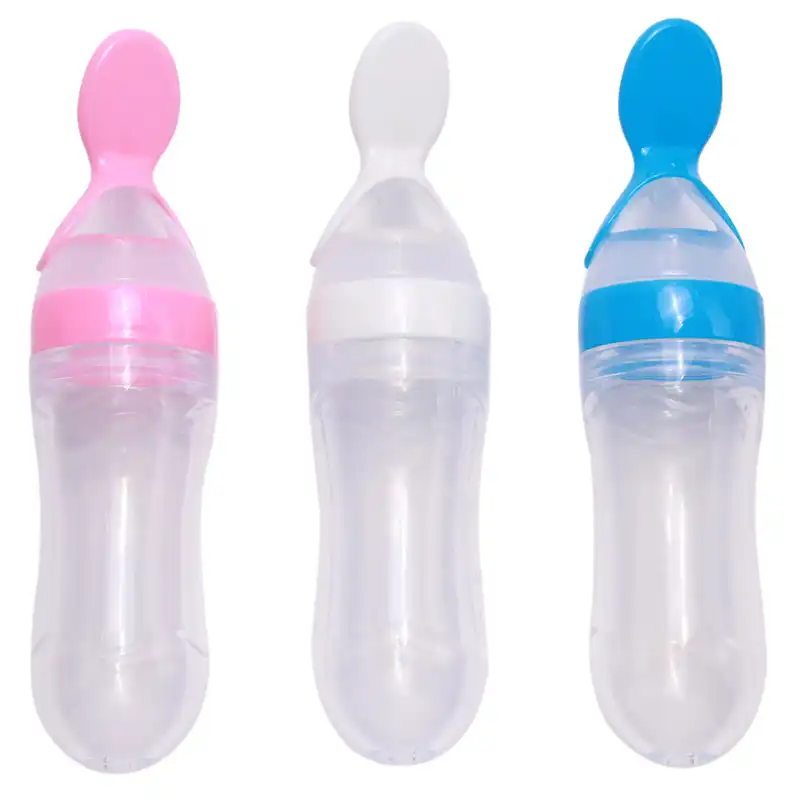 Despite popular belief, adding cereal or other solid foods to your baby’s diet will not help your baby sleep through the night. Your baby may have a hard time learning to eat from a spoon, if she gets used to taking solid foods in a bottle. Giving cereal before 4 to 6 months may also increase the risk of food allergies. Harvard Medical School – 2 Month Old Baby Care
Despite popular belief, adding cereal or other solid foods to your baby’s diet will not help your baby sleep through the night. Your baby may have a hard time learning to eat from a spoon, if she gets used to taking solid foods in a bottle. Giving cereal before 4 to 6 months may also increase the risk of food allergies. Harvard Medical School – 2 Month Old Baby Care
Q: Will cereal in the bottle before bed help my baby sleep through the night? Does feeding before bed help a baby sleep through the night?
A: No to both questions.
First: No, it is usually a bad idea to put cereal in the bottle before bed. This may lad to children waking up at night with gas and stools. It may also lead to a baby learning to become dependant on having a “full belly” to fall asleep. Also, cereal is only “empty calories” for babies under 4 to 6 months old, with little nutritional value except in older babies.
Second, feeding before bed usually does not help a child sleep though the night (at least, in most babies over two or three months old.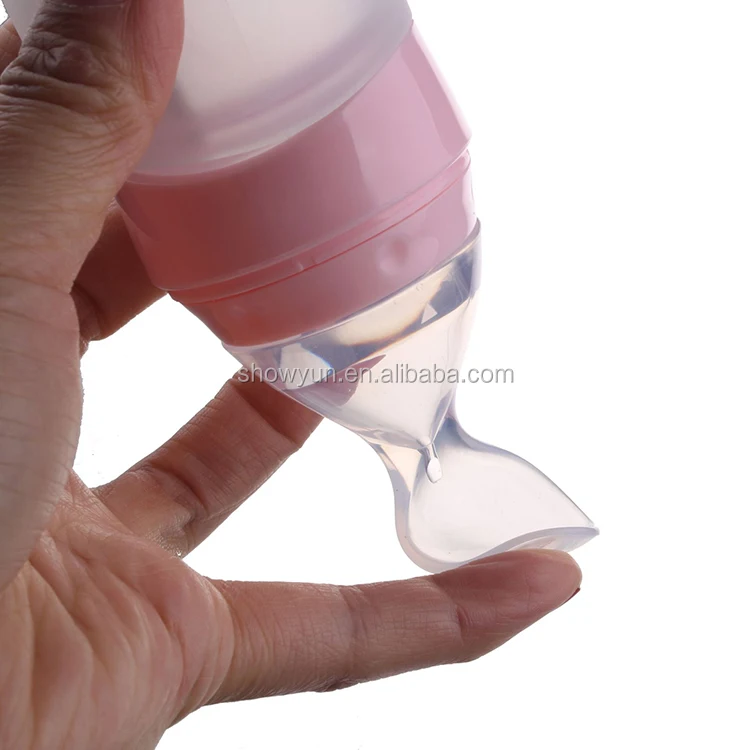 ) Feeding to sleep can lead to dentition, so called bottle caries. Maybe sometimes feeding before bed helps a baby under two or three months old sleep through the night, but it often leads to problems as listed above. For older babies it rarely helps them sleep through the night, and often leads to dependence on feeding before bed that can lead to tooth decay, obesity, and sleep problems that begin at nine to twelve months of life. In short, when kids get in the habit of feeding to sleep, it’s very hard to break them of that habit. Also, feeding with a bottle in bed can lead to recurrent ear infections. Pine Street Pediatrics – FormulaFAQ.htm
) Feeding to sleep can lead to dentition, so called bottle caries. Maybe sometimes feeding before bed helps a baby under two or three months old sleep through the night, but it often leads to problems as listed above. For older babies it rarely helps them sleep through the night, and often leads to dependence on feeding before bed that can lead to tooth decay, obesity, and sleep problems that begin at nine to twelve months of life. In short, when kids get in the habit of feeding to sleep, it’s very hard to break them of that habit. Also, feeding with a bottle in bed can lead to recurrent ear infections. Pine Street Pediatrics – FormulaFAQ.htm
Does adding cereal to a baby’s formula help them sleep through the night?
I do not recommend adding cereal to the formula. Sleeping though the night is not just a matter of filling up. Little stomachs can only hold so much. Adding cereal to formula makes each feeding less nutritious in terms of calcium, other minerals, fats, and protein.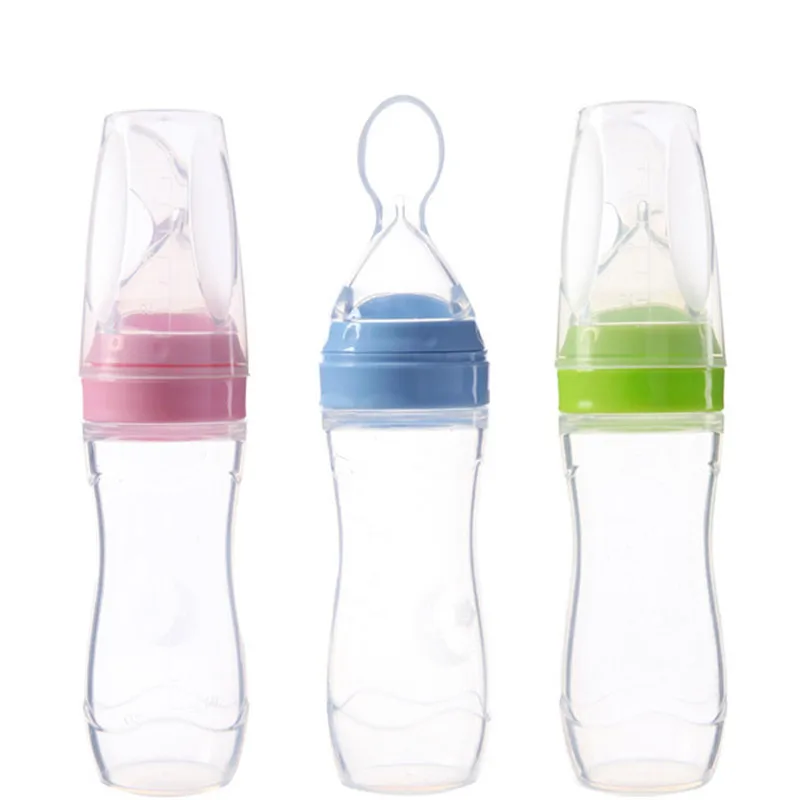 Feed your formula-fed infant all the formula she needs to satisfy her. She will sleep through the night when she is ready. (About half the bottle-fed infants are sleeping through the night at 8 weeks; half are not. Breast-fed infants normally wake for middle-of-the-night feedings for quite a while longer.) Your New Baby & Sleep; MSNBC
Feed your formula-fed infant all the formula she needs to satisfy her. She will sleep through the night when she is ready. (About half the bottle-fed infants are sleeping through the night at 8 weeks; half are not. Breast-fed infants normally wake for middle-of-the-night feedings for quite a while longer.) Your New Baby & Sleep; MSNBC
Cereal in the Bottle may lead to overeating
“I’m much more concerned about a subtler issue. Babies are born with a wonderful mechanism for knowing how much food they need. During the early months, they take their cues from the volume of what they drink. Adding cereal derails this mechanism. It forces them to take in deceptively large amounts of calories. It teaches them to overeat.“ Dr. Greene on Cereal in the Bottle for Sleep
Resources & Learning More about Adding Cereal to Baby’s Bottle
NIH Medical Library – Study on Infant Sleep & Bedtime Cereal
Your New Baby & Sleep; MSNBC
Dr.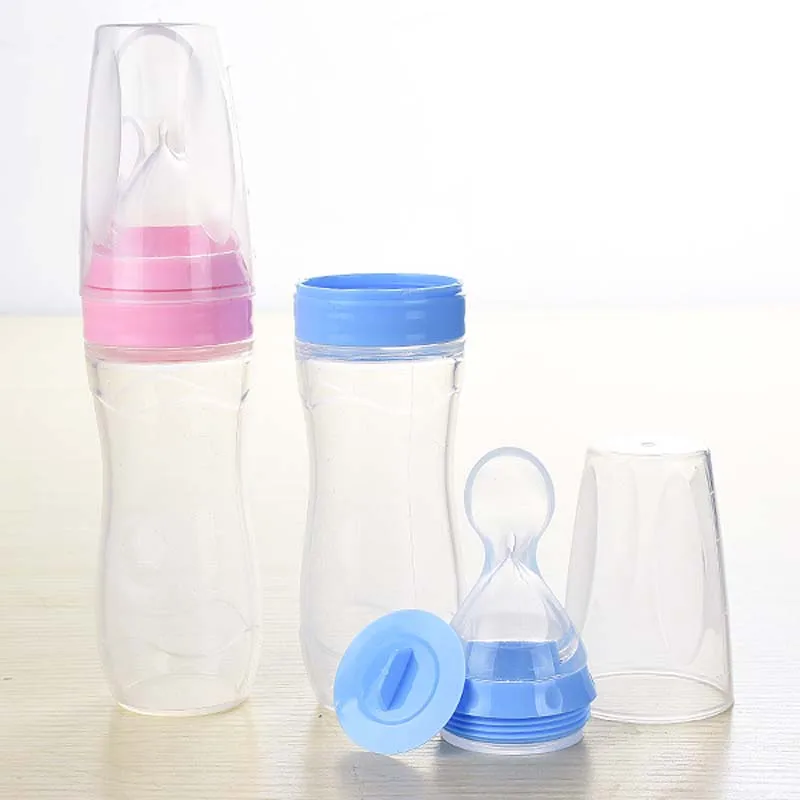 Greene on Cereal in the Bottle for Sleep
Greene on Cereal in the Bottle for Sleep
Remember, always consult with your pediatrician regarding introducing solid foods to your baby and specifically discuss any foods that may pose allergy risks for your baby.
This site complies with the HONcode standard for trustworthy health information: verify here.
“The next time someone tells you to “just give the baby a little cereal to get him to sleep better,” ask what she would recommend for an adult who can’t sleep. Chances are, her advice would be to drink a glass of warm milk…”
Jan Barger, certified lactation consultant
SHARE ON FACEBOOK SHARE ON PINTEREST
Feeding Your 4- to 7-Month-Old (for Parents)
Most babies this age are ready to try solid foods. Experts recommend starting solid foods when a baby is about 6 months old, depending on the baby's readiness and nutritional needs.
Be sure to check with your doctor before giving any solid foods.
Is My Baby Ready to Eat Solid Foods?
How can you tell if your baby is ready for solids? Here are a few hints:
- Does your baby swallow food or push it out of their mouth? Babies have a natural tongue-thrust reflex that pushes food back out.
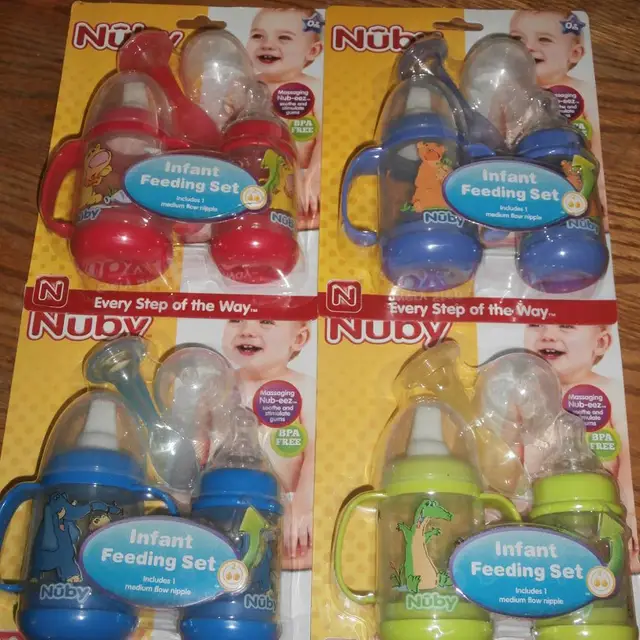 Wait until this reflex disappears (typically when babies are 4–6 months old).
Wait until this reflex disappears (typically when babies are 4–6 months old). - Can your baby support their own head? To eat solid food, an infant needs good head and neck control and should be able to sit up.
- Is your baby interested in food? Babies who stare, reach and grab, and open their mouths for food are ready to try solid foods.
If your doctor gives the go-ahead but your baby seems frustrated or uninterested in solid foods, try waiting a few days before trying again. Breast milk and formula will still meet nutritional needs as your baby learns to eat solid foods. But after 6 months, babies need the added nutrition — like iron and zinc — that solid foods provide.
Do not add cereal or other food to your baby's bottle because it can lead to too much weight gain.
Watch for signs that your child is hungry or full. Respond to these cues and let your child stop when full. A child who is full may suck with less enthusiasm, stop, or turn away from the breast or the bottle. With solid foods, they may turn away, refuse to open their mouth, or spit the food out.
With solid foods, they may turn away, refuse to open their mouth, or spit the food out.
How Should I Start Feeding My Baby Solid Foods?
When your baby is ready and the doctor says it’s OK to try solid foods, pick a time of day when your baby is not tired or cranky. You want your baby to be a little hungry, but not so hungry that they’re upset. So you might want to give your baby a little breast milk or formula first.
Have your baby sit supported in your lap or in a high chair with a safety strap.
Most babies' first food is iron-fortified infant single-grain cereal mixed with breast milk or formula. Place the spoon near your baby's lips, and let the baby smell and taste it. Don't be surprised if this first spoonful is rejected. Wait a minute and try again. Most food offered to your baby at this age will end up on the baby's chin, bib, or high-chair tray. Again, this is just an introduction.
When your little one gets the hang of eating cereal off a spoon, it may be time to try single-ingredient puréed meat, vegetables, or fruit. The order in which you give them doesn't matter, but go slow. Offer foods that are high in iron and zinc — such as meat, poultry, eggs, and beans — especially if your baby is breastfeeding. Try one food at a time and wait several days before trying something else new. This will let you identify any foods that your baby may be allergic to.
The order in which you give them doesn't matter, but go slow. Offer foods that are high in iron and zinc — such as meat, poultry, eggs, and beans — especially if your baby is breastfeeding. Try one food at a time and wait several days before trying something else new. This will let you identify any foods that your baby may be allergic to.
Which Foods Should I Avoid?
Foods that are more likely to cause allergies can be among the foods you introduce to your baby. These include peanuts, eggs, cow’s milk, seafood, nuts, wheat, and soy. Waiting to start these foods does not prevent food allergies. Talk to your doctor if you’re concerned about food allergies, especially if any close family members have allergies, food allergies, or allergy-related conditions, like eczema or asthma.
Infants with severe eczema or egg allergies are more likely to have allergies to peanuts. Talk to your doctor about how and when to introduce these foods to your child.
Possible signs of food allergy or allergic reactions include:
- rash
- bloating or an increase in gassiness
- diarrhea
- vomiting
Get medical care right away if your baby has a more severe allergic reaction, like hives, drooling, wheezing, or trouble breathing.
If your child has any type of reaction to a food, don't offer that food again until you talk with your doctor.
Babies shouldn't have:
- foods with added sugars and no-calorie sweeteners
- high-sodium foods
- honey, until after the first birthday. It can cause botulism in babies.
- unpasteurized juice, milk, yogurt, or cheese
- regular cow's milk or soy beverages before 12 months instead of breast milk or formula. It’s OK to offer pasteurized yogurt and cheese.
- foods that may cause choking, such as hot dogs, raw carrots, grapes, popcorn, and nuts
Tips for Feeding Your Baby Solid Foods
With the hectic pace of family life, most parents try commercially prepared baby foods at first. They come in small, convenient containers, and manufacturers must meet strict safety and nutrition guidelines.
If you prepare your own baby foods at home, here are some things to keep in mind:
- Follow the rules for food safety, including washing your hands well and often.
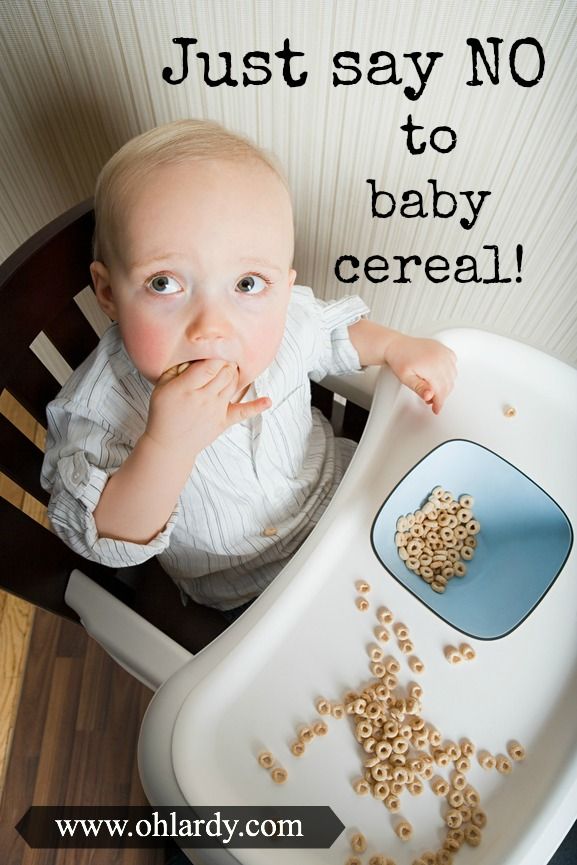
- To preserve the nutrients in your baby's food, cook it in ways that keep the most vitamins and minerals. Try steaming or baking fruits and vegetables instead of boiling, which washes away the nutrients.
- Freeze portions that you aren't going to use right away.
- Whether you buy the baby food or make it yourself, texture and consistency are important. At first, babies should have finely puréed single-ingredient foods. (Just applesauce, for example, not apples and pears mixed together.)
- After your baby is eating individual foods, it's OK to offer a puréed mix of two foods. As babies get older, they will learn to eat a greater variety of tastes and textures.
- If you use prepared baby food in jars, spoon some of the food into a bowl to feed your baby. Do not feed your baby right from the jar — bacteria from the baby's mouth can contaminate the remaining food. If you refrigerate opened jars of baby food, it's best to throw away anything not eaten within a day or two.

- Around 6 months of age is a good time for your baby to try a cup. You might need to try a few cups to find one that works for your child. Use water at first to avoid messy clean-ups. Do not give juice to infants younger than 12 months.
Over the next few months, introduce a variety of foods from all the food groups. If your baby doesn't seem to like something, don’t give up. It can take 8 to 10 tries or more before babies learn to like new foods.
SUS 304 Materials Oat Cereal Making Machine Instant Edible Cereal Baby Food Making Machine
- Details
- Product Description
Product Description
Materials SUS 304 Oats Cereal Making Machine Instant Edible Cereal Baby Food Making Machine
Characteristic
Core Equipment for Production of Instant Roller Cotton Eaters. The production method is characterized by: product high maturity, good nutrition retention, energy saving, health, technology is mature. Use of pressure vessel for steel instead of traditional casting roller, long life, high safety factor, good heat transfer effect, adjustable temperature convenience.
The production method is characterized by: product high maturity, good nutrition retention, energy saving, health, technology is mature. Use of pressure vessel for steel instead of traditional casting roller, long life, high safety factor, good heat transfer effect, adjustable temperature convenience.
PLC control, high degree of automation, programming control effects well, save the operation of personnel, to achieve electrification control.
Usage Atmospheric pressure Efficiently using traditional hot rod dry methods. Heat transfer steam-rolling path roller througj from within, heat up to the material from the small adn roller seal of rollers, uniform surface thichness 85%. Roller layer, widely used in food drying.
Packing and Shipping
1. Prompt deliver at the very bottom.
2. Sophisticated and professional logistics agent.
3. Well trained and disciplined packing team.
4. After-sales service:. Any questions or problems after receiving the product, please feel free to contact us. Problems would be resolved for you immediately.
After-sales service:. Any questions or problems after receiving the product, please feel free to contact us. Problems would be resolved for you immediately.
Main technical data
| Model name | Main parameters | Products |
| G0508 Single Roll Dryer | formula machine φ500*800 | 60-0kg/x |
| G1016 | dinle roller dryersmall machinery φ1000*1600 | 110-130kg/h |
| G1223 Single Roller Dryer | small and medium size machinery φ1200*2300 | 160-180kg/h |
| G1530 Single Roller Dryer | middle size machinery φ1500*2300 | 230-280kg/h |
Our images of the machine
Our video machine
Tag:
You could be in these
Cereals in baby food
Feature: contain gluten. Not recommended as a first meal.
For the first time, corn flakes were heard at the beginning of the 19th century in Michigan. They were invented by Dr. Kellogg and his brother Will Keith Kellogg at random. They were preparing some kind of cornmeal dish, but in the process of cooking they had to leave. When they returned, they saw that the flour had gone bad. But since the flour was strictly controlled, they decided to cook the dish anyway. But the dough was lumpy. Some of them became airy and crispy. They were served with milk and marshmallows. This new dish has become very popular. This is how corn flakes were born.
100 grams of cereal contains 352 kcal
| Vitamins | Macronutrients | Microelements |
| Vitamin PP - 1 mg Vitamin E - 3.2 mg Vitamin B1 (thiamine) - 0.45 mg Vitamin B2 (riboflavin) - 0.1mg Vitamin B6 (pyridoxine) - 0.24mg Vitamin B9 (folic) - 23 mcg Vitamin E (TE) - 1.6mg Vitamin H (Biotin) - 20 mcg Vitamin PP (Niacin Equivalent) - 4.6mg | Calcium -52 mg Magnesium - 129 mg Sodium - 20 mg Potassium - 330 mg Phosphorus - 328 mg Chlorine - 73 mg Sulfur 88 mg | Iron - 3.6 mg Zinc - 3. Iodine - 6 mcg Copper - 450 mcg Manganese - 3.82 mg Fluorine - 45 mcg Cobalt - 5 mcg |
Now the production technology includes the processes of removing the shells from the grains, separating the germs, obtaining cereals, followed by its boiling in sugar-salt syrup, then flattening into thin petals and roasting them in ovens to a crispy state.
Composition and nutritional properties of flakes:
100 g of cereal contains:
- Water - 12 g
- Proteins - 12.3 g
- Fat - 6.2 g
- Carbohydrates - 61.8 g
- Dietary fiber - 6 g
- Ash - 1.7 g
- Mono- and disaccharides - 1.2 g
- Starch - 60.1 g
- Saturated fatty acids - 1.4 g
- Unsaturated fatty acids - 4.48 g
Flakes well saturate the body, give a charge of vivacity.
Health benefits of flakes
Now we have not only corn flakes, but also oat, wheat, rice and wheat bran flakes. What benefits do they have for our body?
What benefits do they have for our body?
Oatmeal
They are cereals made from peeled, steamed and dried oat grains, flattened on smooth rollers.
The polysaccharides found in oatmeal improve bowel function, skin condition, and hair condition. Such cereals have a stimulating, tonic, tonic effect, as well as improve blood composition, normalize metabolism, and help regulate weight. And in general, increase the body's immunity.
See also: baby food Oatmeal
Corn flakes
Corn flakes (the so-called corn flakes) are useful with sour cream, eggnog or condensed milk. You can also eat with milk, sour cream, cream, cottage cheese, coffee, broth, berry or fruit juice.
Corn flakes, despite their popularity, are not as healthy as oatmeal. In some countries they are banned, especially for children. Corn flakes are best used as small snacks between meals, but not as a regular meal.
Wheat, rice and wheat bran flakes have about the same nutritional value as corn flakes.![]()
Read also: Useful product. Corn
Contraindications for use
Experts warn that constant consumption of corn flakes can lead to obesity. They contribute to the accumulation of sugar, the deposition of fat, can cause nausea and abdominal pain, provoke constipation. They can also cause allergic reactions.
Flakes in baby food
Flakes are not suitable as first foods. They contain gluten, children of the first year should not be given them to avoid allergies.
Preparation and consistency
Flakes can be consumed as an independent product, previously poured with cold milk. This is one of the favorite treats for children. But it is not recommended to abuse them.
Cereal recipes for children
Cottage cheese casserole with oatmeal and fruit
Ingredients:
- Cottage cheese - 100 g
- Egg - 1 pc.
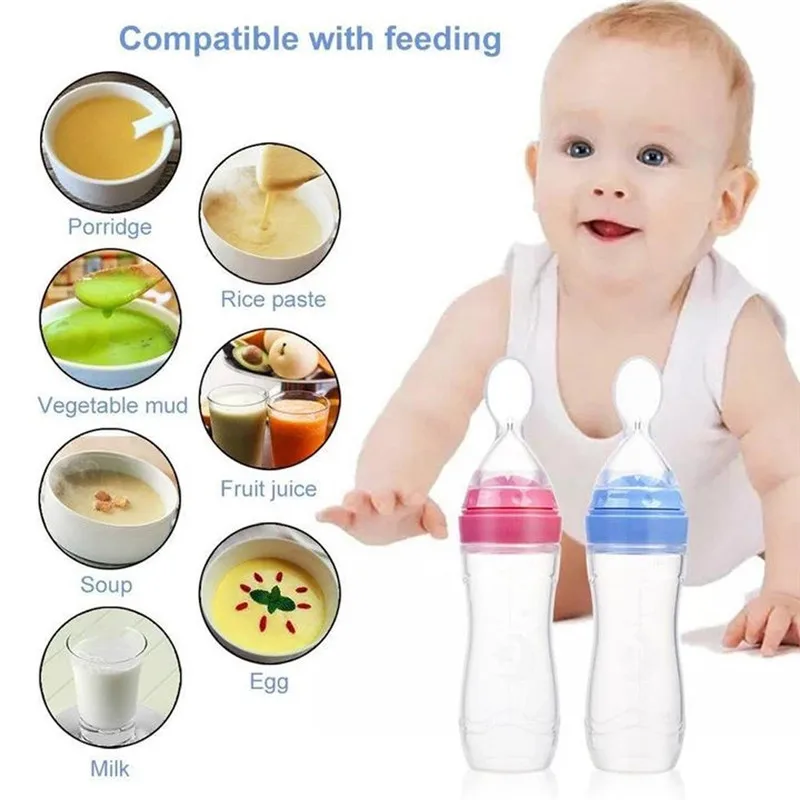
- Sugar - 2 tbsp. l.
- Oatmeal - 3 tbsp. l.
- Half a big apple
- Dried apricots to taste
Preparation:
Add eggs, sugar and oatmeal to the cottage cheese and leave for 15 minutes to swell the flakes. At this time, we clean the apple and rub it on a fine grater.
Then cut the dried apricots into small pieces or pass through a blender. Dried apricots can be replaced with raisins. We add all this to the curd mass.
Preheat the oven to 180 degrees. We lay out the casserole in forms, bake for 30 minutes.
Oatmeal and cottage cheese biscuits
Ingredients:
- Curd – 250g
- Oatmeal - 2 cups
- Eggs -1-2pcs.
- Sugar -0.5 cup
- Butter -50g
- Sour cream - 1 tbsp. spoon
- Vanillin to taste
Preparation:
Combine oatmeal with cottage cheese, eggs, softened butter, sugar and vanilla.

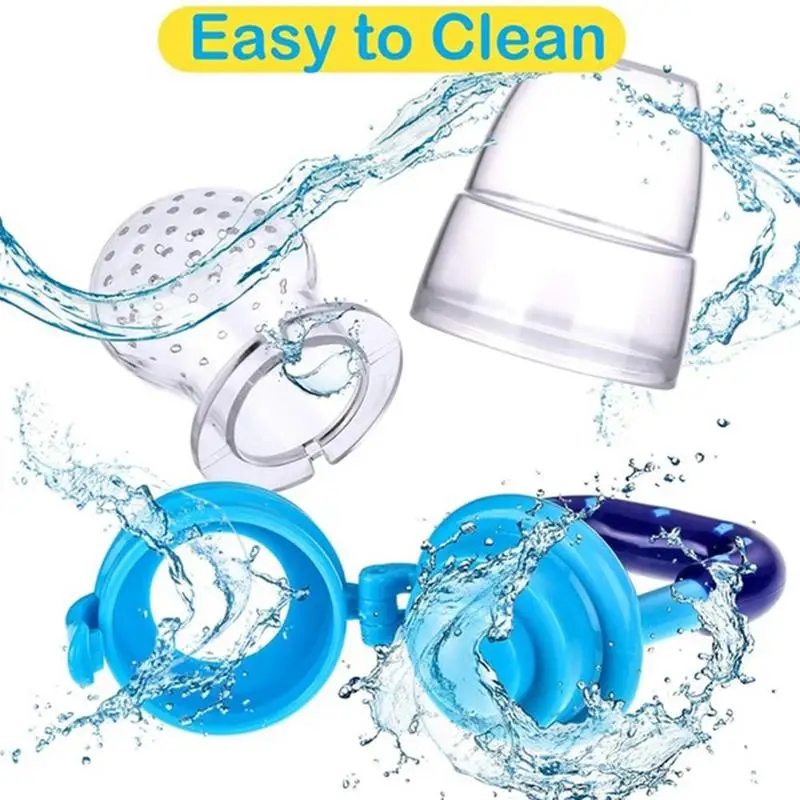 1 mg
1 mg 


